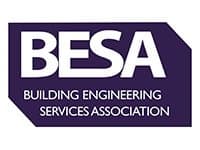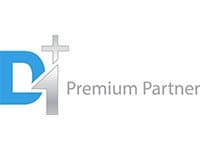If you’re renting out or planning to rent out a commercial properly, it’s important to fully understand your responsibilities in terms of heating and other energy considerations. As a landlord, you will want to know the details of the type and efficiency of the heating you are expected to provide. It may also be useful to know about your most efficient heating options as well as who is responsible for paying energy bills.
What counts as a commercial property?
Also known as commercial real estate, commercial rentals are properties used for business activity, or for the purpose of making a profit. Some examples of commercial properties include buildings used as:
- Offices
- Retail (hairdressers, dry cleaners, post office, hardware shops, boutiques, etc)
- Banks
- Legal or professional firms
- Restaurants and Cafes
- Pubs and clubs
- Industrial warehouses
- Distribution centres
- Factories
- Film or photography studios
- Hotels
- Boarding schools
- Nursing homes
- Cinemas
- Sports centres
- Art galleries
- Health clinics
- Supported housing for up to 6 people receiving care
They often have different rules and regulations than residential properties, as they are likely to have a higher footfall and spend longer periods of time inactive. Because more members of the public use them, they also have stricter guidelines around accessibility and planning permission.

They are commonly classified under 5 different categories, which are relevant if you’re planning on changing the use of a property you own.
Energy Responsibilities as a Commercial Landlord
Landlords are responsible for providing the means for their property to reach a reasonable workplace temperature year-round. Guidance suggests that the heating system should allow the workplace to comfortably reach at least 16 degrees Celsius, or 13 degrees if the employees will be doing physical work (such as in a warehouse for example).
The landlord will normally be responsible for different health and safety considerations in regards to energy and heating, although this may depend on your lease.
This includes gas safety, which means at least annual inspections of any gas systems and appliances by a registered gas safety engineer, professional installations, and maintaining equipment in good working order. In some cases where the property has a solely commercial use, this may move to the tenant’s responsibility. However, this is often not the case where the building has a joint use or shared areas with a gas supply.
You will also often be responsible for the safety standards or any electrical fixtures and fittings, and for providing adequate lighting and ventilation for the building’s intended purpose.
A Tenant’s Responsibilities for gas, heating, and energy
Like a landlord’s, a tenant’s responsibility for gas, heating, electricity, and so on depends on the specifics of the lease they have signed. Below you will find some guidelines which may apply.
Some leases state that a tenant will pay for all energy bills, in which case they also have the right to switch energy suppliers if they wish. Landlords will continue to be responsible for energy bills while the building does not have a tenant.
Other leases may include all or some energy bills in the rent, or vary the total amount due depending on the tenant’s energy use each month, in which case the landlord will be responsible according to the energy supplier.

A landlord is often responsible for the state of any electrical or gas fittings and appliances when a tenancy commences and may take responsibility for some maintenance tasks such as arranging professional inspections. They will also be ongoingly accountable for the maintenance and repair of these systems in communal areas.
Tenants are responsible for maintaining any electrical appliances they installed themselves, and ensuring they remain safe to use. In some cases, they have a legal responsibility for also maintaining existing electrical and gas appliances on the property according to the manufacturer’s instructions.
Energy Performance Certificates
These show how energy efficient a property is and can last for up to 10 years. Each building gets a rating from A to G, with A being the most efficient EPC rating. Commercial properties must have one of these unless it is due to be demolished, a listed building, only to be used for 2 years or less, or has less than 50 metres of floor space. You can find more details about this here.
Energy Performance Certificate ratings should be made available to prospective tenants and must also be displayed on the building if
- The useful floor space exceeds 500 metres
- An EPC has previously been produced for the building’s reconstruction, sale, or let
- The building is regularly visited by the public
As of April 2018, to renew a commercial lease or let to a new tenant, you must have an EPC of at least “E”. This is due to apply to every lease in 2023, and the acceptable EPC rating is expected to rise to a “D” rating in 2025, and a “C” in 2030. This means it is in your best interests to make your commercial property as energy efficient as possible.
Efficient Heating Solutions for Commercial Rentals
There are many different ways to heat a commercial building, and the best solution will depend on the type of building and its use.
Read our guide to heating warehouses.
Read our guide to industrial heating
However, a few popular options outside or oil or gas heating include:
Heat Pumps
These devices bring in heat from the outside, either from the air or ground, and either transfer it to air to be blown out into the space or hot water to be used in radiators or underfloor heating. They are an extremely efficient heating system which does not produce CO2. Air conditioning units are a form of heat pump (air to air) which are very commonly used in offices and retail commercial spaces.
HVAC Systems
HVAC stands for Heating Ventilation and Air Conditioning systems. These systems can regulate and move either heated or cooled air (depending on the time of year and building needs) throughout the building, industrial or commercial space. The aim of these climate control systems is to control the environment by delivering warm or cool air, filtered to remove dust/dirt/allergens where required throughout the commercial space.
Air is typically distributed through air vents or ductwork and can be combined with a heat recovery system to run as efficiently as possible.

Space and Radiant Tube Heaters
These infrared heating devices are useful in large, well-ventilated areas (such as warehouses) where it may be difficult for radiators or blown warm air to have an effect. They can be used to warm very specific areas or distributed to maintain a consistent temperature in larger areas.
Air Handling Units
An air handling unit is a combination of modules which is used to perform the venilation requirements including purification, air cooling/heating and renewing the air within a building.
AHUs take fresh ambient air, clean it, raise or cool it to the right temperature before supplying it through ductwork to areas within a building. There is normally a flow and return so that stale air can be returned outside of the building to be replaced by fresh air.
These units are great for reducing waste heat and efficient ventilation as well as heating your building and come in a variety of sizes and types for different property types.
Need help developing a heating system for your commercial property?
Total Environmental Kooling are experts in designing and installing all aspects of heating and HVAC systems. We are experienced in a range of commercial projects and pride ourselves on the relationships we build with both the architect, main contractor, and client.
Get in contact today to discover how we can help you.









